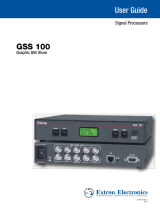
English - 2
Measured values determined according to
EN 60 745.
Typically the A-weighted sound pressure level of
the machine is 76 dB (A). Measurement uncer-
tainty K=3 dB.
When working, the noise level can exceed
85 dB (A).
Wear hearing protection!
The typically weighted acceleration is 3 m/s
2
.
Read all instructions. Failure to
follow all instructions listed below
may result in electric shock, fire
and/or serious injury.
Additionally, the general safety instructions either
in the enclosed booklet or those added in the
centre of these operating instructions must be ob-
served.
SAVE THESE INSTRUCTIONS.
■ Secure the workpiece. A workpiece clamped
with clamping devices or in a vice is held more
securely than by hand.
■ Take protective measures when dust can
develop during working that is harmful to
one’s health, combustible or explosive. Ex-
ample: Some dusts are regarded as carcino-
genic. Work with dust/chip extraction and
wear a dust mask.
■ Keep your workplace clean. Material mix-
tures are particularly dangerous. Dust of light
metal can be inflammable or explode.
■ Do not work materials containing asbes-
tos. Asbestos is considered carcinogenic.
■ Do not use a machine with a damaged
mains cable. Do not touch the damaged ca-
ble and pull the mains plug when the cable
is damaged while working. Damaged cables
increase the risk of an electric shock.
■ Connect machines that are used in the
open via a residual current device (RCD).
■ Use the machine only for dry sanding. Wa-
ter penetrating the power tool increases the
risk of an electric shock.
■ Warning. Fire hazard! Avoid overheating of
the material being sanded and of the power
tool, and always empty the dust collector
before taking breaks. Sanding dust in the
dust bag, microfilter, paper bag (or in the filter
bag or filter of the vacuum cleaner) can self-ig-
nite under unfavourable conditions such as
from sparking while sanding metals. Especially
when it is mixed with particles of varnish or
polyurethane or other chemical materials, and
when the material being sanded is hot after
prolonged operation.
The machine is intended for the dry sanding of
surfaces of wood, plastic and filler as well as for
painter surfaces.
■ Before any work on the machine itself, pull the
mains plug.
Selecting the Sanding Sheet
Depending on the material to be worked, different
sanding sheet qualities are to be used:
for the working of all wooden materials.
for the working of paint/enamel coats or primers
and fillers.
Replacing the Sanding Sheet
Before placing on a new sanding sheet, free the
sanding plate from dust and dirt.
To ensure optimum dust extraction, the holes of
the sanding sheet must match with those of the
sanding plate.
Sanding Sheet with Velcro Backing
(see figure )
The sanding sheets are placed directly onto the
sanding plate. The hole pattern in the sanding
plate and sanding sheet must match.
Before placing on the sanding sheet, free the Vel-
cro backing of the sanding plate from dust/debris
by lightly tapping against it.
Noise/Vibration Information
For Your Safety
Intended Use
Replacing the Sanding Sheet
2 609 932 440.book Seite 2 Montag, 13. Dezember 2004 11:06 11
12 • 2 609 932 440 • TMS • 03.12.04






